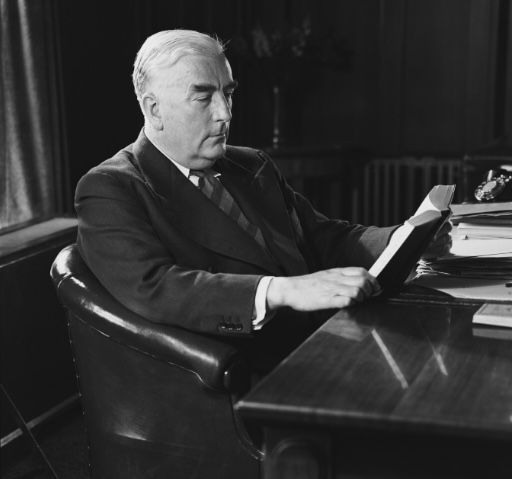William J. Sebald, With MacArthur in Japan: A Personal History of the Occupation (1965)
When Japan accepted the Allies’ terms for an unconditional surrender on 15 August 1945, the news as it had developed over the preceding days came as a joyous surprise to the Australian public. The Chifley Government had not been fully informed of the destructive super weapon that had brought the war to an unexpectedly early close, saving countless thousands of Allied lives that would have otherwise had to have been sacrificed on an invasion of the Japanese mainland.
With the government somewhat ignorant of the horrific capabilities of the atom bomb, Robert Menzies as Opposition Leader was even more so, dubbing the shock announcement ‘the greatest piece of news humanity had had for six years’. He said the quick collapse justified Churchill’s strategy of defeating Hitler first, for when the Allies were able to direct their full capabilities against the Japanese it was impossible for them to resist. Finishing his statement by saying ‘the world would now turn with vigour and hope to the problems of peace’.
Those problems began with physically disarming the Japanese militarist state. A job in which Australia would take a leading role, providing both the bulk of the troops and the commander for the British Commonwealth Occupation Force totaling some 45,000 men. At the peak of its involvement the Australian component of BCOF was responsible for over twenty million Japanese citizens and 57,000 square kilometres of country, although matters of direct governance always remained in the hands of the Americans. Led by General Douglas MacArthur and his diplomatic liaison William Sebald.
The occupation would last all the way until 1952. In part because of the difficulties involved in negotiating the Japanese Peace Treaty. Which ended up being quite mild in the retribution it inflicted on the vanquished foe, and instead aimed to allow Japan’s economy to recover as quickly as possible. The Menzies Government would sign this ‘soft’ peace treaty amidst fierce domestic opposition in 1951. But despite the backlash the rewards would be great, including the United States agreeing to sign the ANZUS Treaty and then Australia being able to sign a lucrative Commerce Agreement with Japan in 1957, that would eventually see her become Australia’s number one trading partner.
In the lead up to the signing of the Agreement, Menzies would make the first official trip of an Australian prime minister to Japan. Although certainly not the first trip full stop, as Chifley had visited the Australian occupation force very briefly in 1946, and Menzies would do so more fulsomely in 1950 – coinciding with the 5th anniversary of VP Day.
There he got to have high level talks with MacArthur about the Korean War (although his request to visit Korea itself was expressly denied), make his first acquaintance with leading Japanese political and business figures, and of course mingle with the Australian troops. With a particularly humorous moment being when Private Noel Morgan of Port Kembla said he remembered the PM from his visit to the Port in 1939 as part of the Dalfram Dispute. Unperturbed, ‘Pig Iron Bob’ replied with a laugh ‘oh, that is probably where I got my nickname’.
The visit was also the first occasion on which Menzies would meet Sebald, the author of With MacArthur in Japan, who would go on to serve as the American Ambassador to Australia from 1957-1961.
You might also like...
Sign up to our newsletter
Sign up for our monthly newsletter to hear the latest news and receive information about upcoming events.


